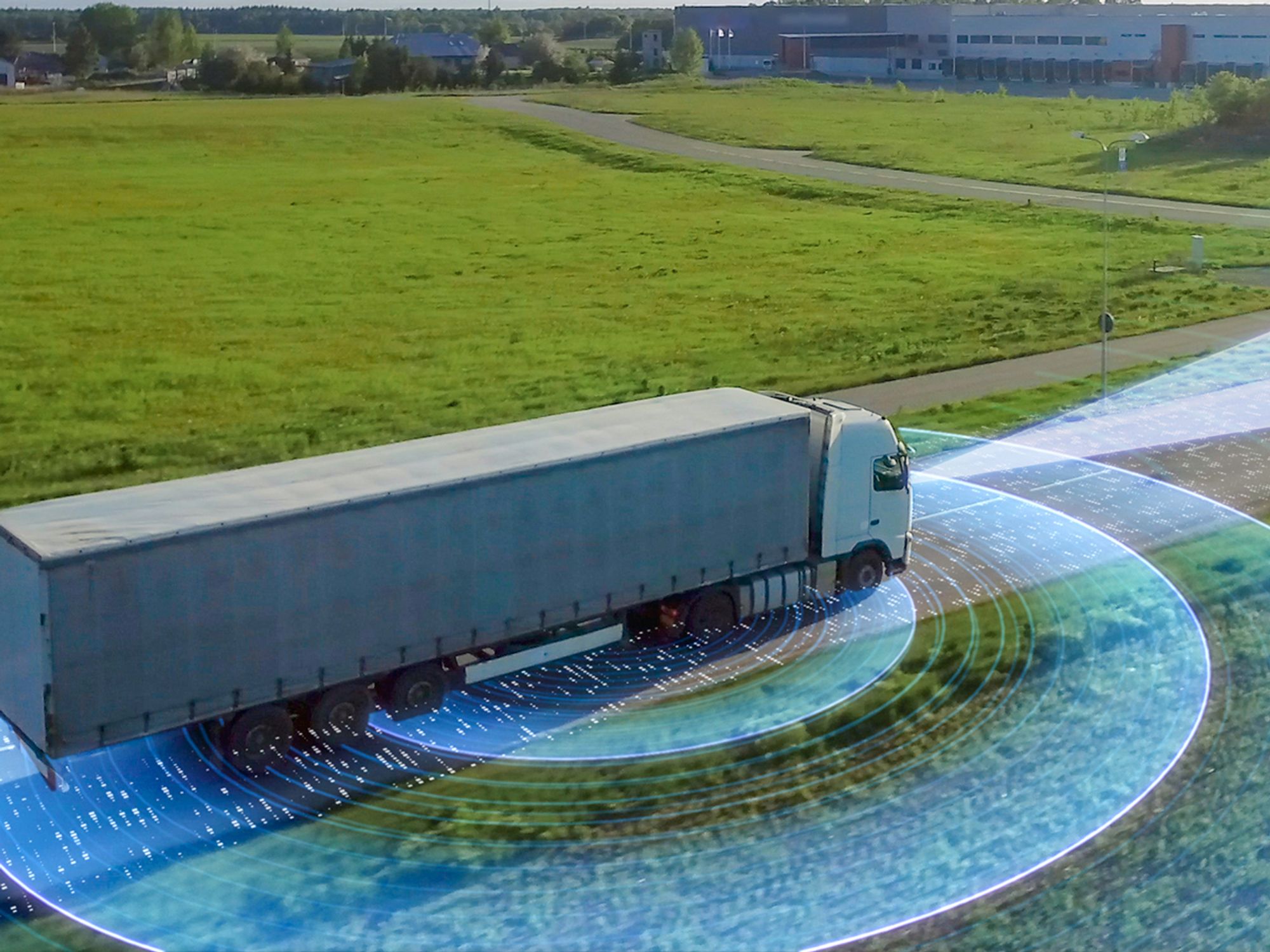Autonomous vehicles

- Federal Motor Carrier Safety Administration (FMCSA) and National Highway Safety Administration (NHTSA) are developing regulations covering autonomous vehicles but none have been published to date.
- Autonomous vehicles are being tested with safety engineers (drivers) in the truck, but very limited use and testing of driverless commercial vehicles exists today.
- The NHTSA has defined six levels of automation from complete driver-controlled vehicles (Level 0) to driverless vehicles (Level 5).
Autonomous vehicles (AVs) can operate without driver interaction which is a step above Advanced Driver Assistance Systems (ADAS) - equipped vehicles. Self-driving cars have made headlines due to some high-profile crashes. Advertisements show people cruising down the highway with their hands off the wheel. However, autonomous commercial trucks have been tested but have not been in the public eye nearly as much.
Federal Motor Carrier Safety Administration (FMCSA) involvement
FMCSA is actively promoting AVs as a potentially new and more safe technology, but has yet to change regulations governing things like driver qualification or HOS for drivers operating AVs. FMCSA is also promoting Advanced Driver Assistance Systems or ADAS through their Tech-Celerate Now program. Automated emergency braking, adaptive cruise, lane-centering, etc.
Possible regulatory areas that could be affected by future changes are:
- Vehicle parts and accessories (Part 393)
- Federal Motor Vehicle Safety Standards (FMVSS)
- Vehicle inspections (Part 396)
- Driver hours of service (Part 395)
- Driver qualification (Part 391)
However, there are no current or proposed federal rules for commercial motor vehicles (CMVs) operating without driver interaction with the vehicle controls.
State regulations
States are overseeing testing. There is a patchwork of requirements or regulations from state to state.
National Conference of State Legislatures (NCSL) Autonomous Vehicles State Bill Tracking Database (ncsl.org) contains legislation beginning with 2017 by state, topic, keyword, year, status or primary sponsor. New measures are added quarterly and you can search the database for testing in any state.
American Association of Motor Vehicle Administrators (AAMVA)
The American Association of Motor Vehicle Administrators (AAMVA) is a nonprofit organization developing model programs in motor vehicle administration, law enforcement, and highway safety for state motor vehicle departments. The association also serves as an information clearinghouse in these areas and acts as the international spokesperson for these interests.
The purpose of the Automated Vehicle Subcommittee is to work with the AAMVA jurisdictions, law enforcement, federal agencies and other stakeholders to gather, organize and share information with the AAMVA community related to the development, design, testing, use and regulation of autonomous vehicles and other emerging vehicle technology. Based on the group’s research, a best practices guide will be developed to assist member jurisdictions in regulating autonomous vehicles and testing the drivers who operate them.
National Highway Traffic Safety Administration (NHTSA) oversight
NHTSA is in the process of developing standards for AVs, but they are trying not to stifle innovation. However, NHTSA is tracking AV testing in the AV Test Initiative database which is a tool to find AV testing going on in any state with all types of AVs.
Also, any crashes with AVs now have to be reported based on a Standing General Order requiring manufacturers and operators of vehicles equipped with SAE Level 2 advanced driver assistance systems (ADAS) or SAE Levels 3-5 automated driving systems (ADS) to report crashes. This action will enable NHTSA to collect information necessary for the agency to play its role in keeping Americans safe on the roadways, even as the technology deployed on the nation’s roads continues to evolve.
Levels of automation
A basic understanding of the National Highway Traffic Safety Administration’s (NHTSA) five levels of vehicle automation is necessary to have a dialogue on the topic of AVs:
Level 0 – Momentary driver assistance: The driver is fully responsible for the vehicle with warnings or momentary driving assistance with braking.
Level 1 – Driver assistance: The driver is responsible for the vehicle, but the vehicle can control speed, braking, or steering.
Level 2 – Additional driver assistance: The driver is fully responsible for driving while the system can continuously assist with acceleration, braking, and steering.
Level 3 – Conditional automation: The system handles all aspects of driving, but the driver is available to take over if the system can no longer operate.
Level 4 – High automation: When engaged, the system is responsible for driving, and a human is not needed to operate the vehicle in a limited area under specific conditions.
Level 5 – Full automation: When engaged, the system is responsible for driving under all conditions on all roadways, and a human is not needed to operate the vehicle.
Operational uses of AVs
Nearly all test moves and operational uses of AVs are being done with at least one driver or “safety engineer” in the vehicle. There are very few true driverless operations with commercial motor vehicle AVs on public roadways at this time.
AVs are being tested and used in many areas, including but not limited to:
- Passenger mobility shuttles,
- Terminal to terminal or hub to hub long hauls,
- Yard management trailer moves,
- Port facility moves (intra-facility), and
- Last mile deliveries.
